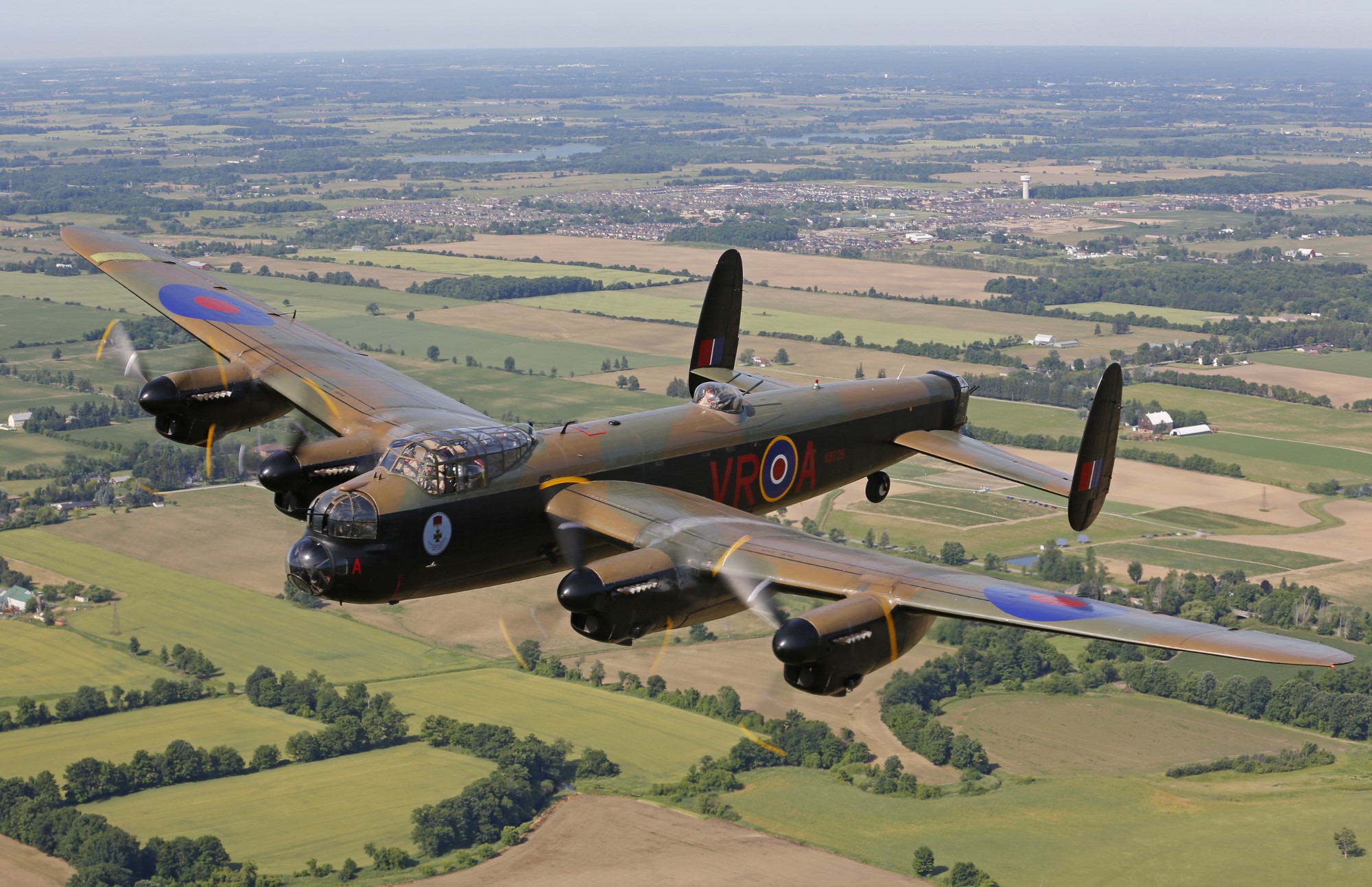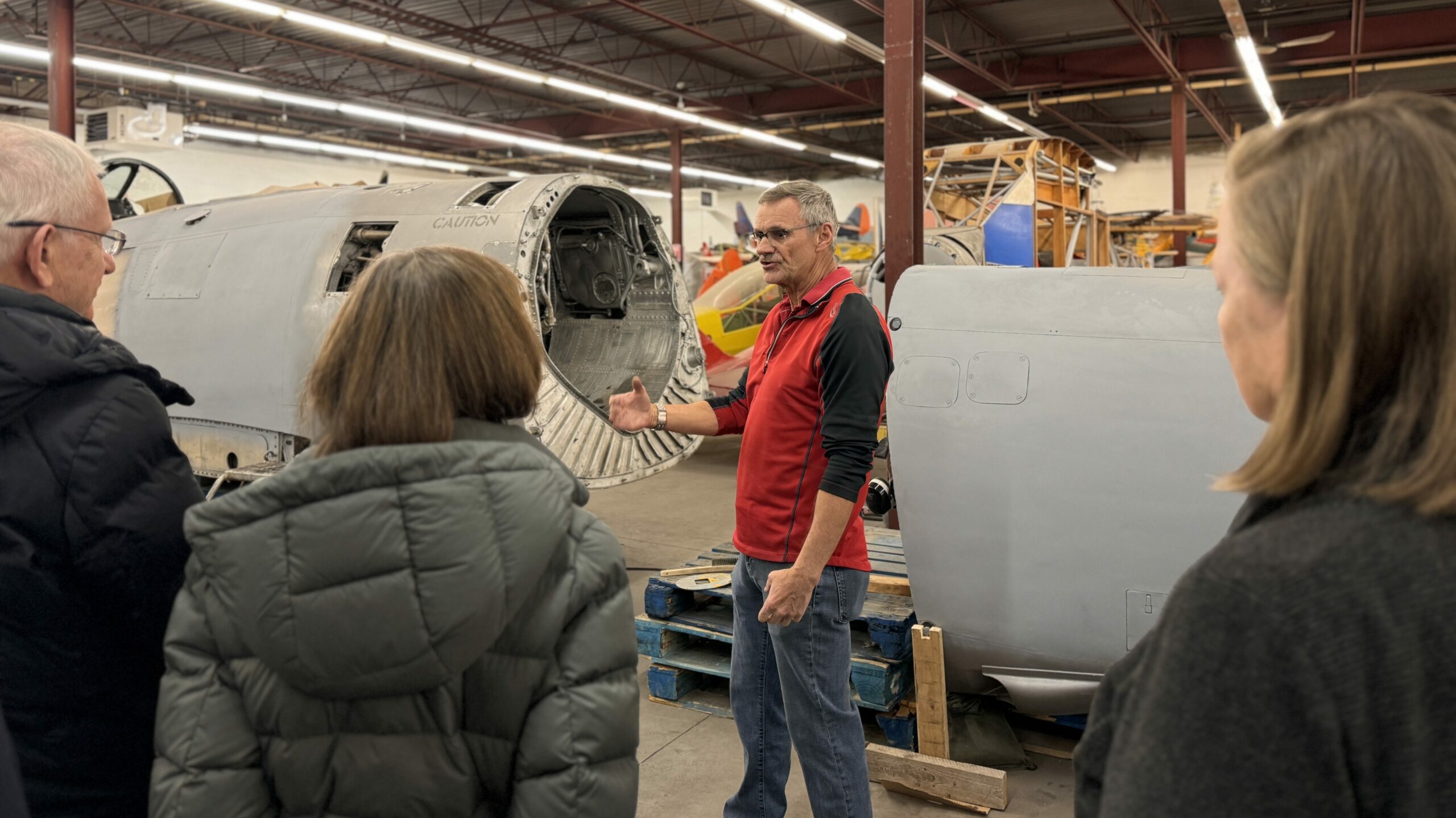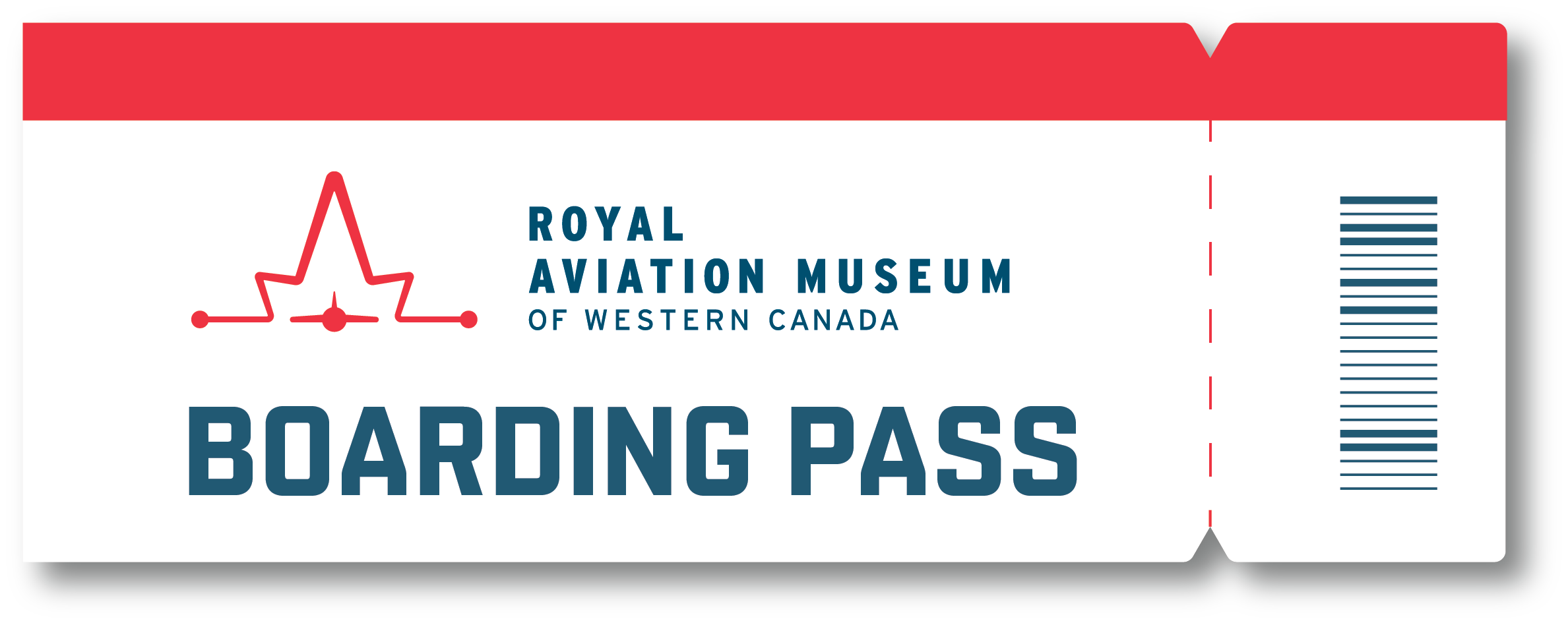January 23, 2023
We recently made a visit to our new off-site restoration facility to see what our loyal volunteers are working on. Read on to find out what’s happening…
Final touches on the Bellanca Aircruiser restoration

Spot the difference! What’s missing from the Bellanca in the present-day photo on the right? If you guessed engine cowling and wheel pants, you’re right!
Before aircraft had retractable landing gear, wheel pants were used to reduce drag, protect the wheels and struts, and improve speed. The aircraft cowling also reduces drag and cools the engine.
The team is working hard to fabricate these two components for our Bellanca Aircruiser so it can be fully restored to match its original condition.
Pedal planes
Shawn Romas is one of our restoration team volunteers and he’s a man of many talents. Aside from helping to fix up aircraft for the museum, he’s been busily working on a fleet of kids’ pedal planes.
These fun, ride-on toys are built to resemble our de Havilland Tiger Moth, the first aircraft to greet you when you enter the Royal Aviation Museum.
Each has been given call letters that memorialize a past restoration volunteer, a squadron number, and a serial number. Shawn even made gauges for each plane.

So, what’s the plan for these pedal planes?
As soon as the weather allows it, Estelle Regnier—the same artist who painted the beautiful murals under our Musketeer and in our Galaxy Exploration Zone—will paint an outdoor track in Aviation Plaza. Once the pedal planes are roadworthy, they’ll be made available to our young visitors!
Wind T (aka “Mr. T”)
Dubbed “Mr. T” by our restoration team, our landing T recently made the trek to our new restoration facility nearby.
A landing tee is one type of visual wind indicator. They’re erected at certain airports to indicate wind direction. When facing into the wind, the wind tee swings with the wind, making the letter “T” readable.
Visual wind indicators can be used to identify wind direction when Air Traffic Control reports are unavailable or if the information on a Common Traffic Advisory Frequency (CTAF) may be unreliable.[1]
After sitting in storage for many years, Mr. T needs a lot of TLC. He’s got some dents and dings, some rust, and a few missing parts.
This is one of the projects our restoration team will be working on over the winter. Hopefully, you’ll see Mr. T all fixed up and next to the Voodoo in the coming months.
Fox Moth/Auster/Fairchild F-24

Some of our aircraft are still in storage throughout the province, but there are three in our restoration facility that are almost ready for display: the de Havilland Fox Moth, the Taylorcraft Auster, and the Fairchild F-24.
Will one or all of these make an appearance in our museum soon? Stay tuned to find out!
Sign up for our Boarding Pass newsletter and never miss out on news and announcements!
[1] https://www.halibrite.com/wind-cones/essential-guide-to-wind-direction-indicators/



